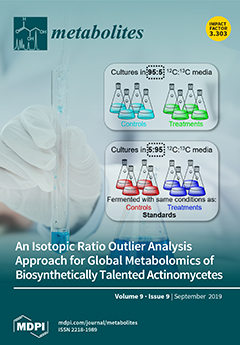Vitamin B
12 deficiency leads to various symptoms such as neuropathy, growth retardation, and infertility. Vitamin B
12 functions as a coenzyme for two enzymes involved in amino acid metabolisms. However, there is limited information available on whether amino acid disorders caused by
[...] Read more.
Vitamin B
12 deficiency leads to various symptoms such as neuropathy, growth retardation, and infertility. Vitamin B
12 functions as a coenzyme for two enzymes involved in amino acid metabolisms. However, there is limited information available on whether amino acid disorders caused by vitamin B
12 deficiency induce such symptoms. First, free amino acid levels were determined in vitamin B
12-deficient
Caenorhabditis elegans to clarify the mechanisms underlying the symptoms caused by vitamin B
12 deficiency. Various amino acids (valine, leucine, isoleucine, methionine, and cystathionine, among others) metabolized by vitamin B
12-dependent enzymes were found to be significantly changed during conditions of B
12 deficiency, which indirectly affected certain amino acids metabolized by vitamin B
12-independent enzymes. For example, ornithine was significantly increased during vitamin B
12 deficiency, which also significantly increased arginase activity. The accumulation of ornithine during vitamin B
12 deficiency constitutes the first report. In addition, the biosynthesis of spermidine from ornithine was significantly decreased during vitamin B
12 deficiency, likely due to the reduction of
S-adenosylmethionine as a substrate for
S-adenosylmethionine decarboxylase, which catalyzes the formation of spermidine. Moreover, vitamin B
12 deficiency also demonstrated a significant reduction in worm lifespan, which was partially recovered by the addition of spermidine. Collectively, our findings suggest that decreased spermidine is one factor responsible for reduced lifespan in vitamin B
12-deficient worms.
Full article






